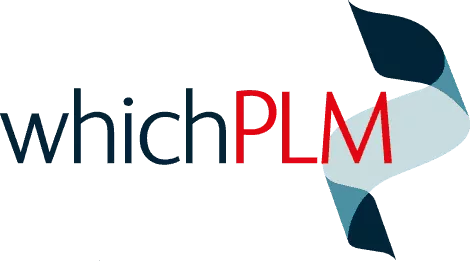
Following on from his recent exclusive, WhichPLM’s own Mark Harrop discusses the rise of multi-tenant PLM and how the solution(s) differ from single-tenant PLM offerings. He takes an objective look, and shares the challenges with implementing both options.

In my last article I began by mentioning how PLM was already 20 years old. Since publication, I’ve been really thinking about this, and about the architectural changes we’ve seen during those years. First was the Client-Server model, followed by the Cloud-SaaS platform model some ten years ago. This came about as cloud technology gained popularity, linked to the launch of Microsoft’s Azure, Rackspace, Oracle, AWS and other cloud platforms.
PLM soon started to migrate from it’s client-server routes with the launch of single-tenant SaaS environments, where each retailer, brand or manufacturer could have its own dedicated server and supporting infrastructure in the cloud. The driver for this migration at the time was linked to lowering the total cost of internal IT, ongoing maintenance of both hardware and softwares and internal skillsets linked to coders and database administration.
More recently we’ve seen further expansions in the form of a shared, multi-tenant architecture that is now becoming widely used on a variety of software solutions. All of which are being designed to help users benefit from all of these technologies without the need for deep knowledge or expertise on each of them.
Like with any traditional PLM implementations, multi-tenant solutions will be configured and customised to meet the exacting needs of the customer, with the emphasis on ‘configuration’ rather than ‘customisation’. In its purest explanation, the main difference between these and the traditional on-premise Client-Server implementations, is that the customer is benefitting from the reduced need for local IT, developers and support resources that is instead being managed by the platform services provider.
Using a simple analogy, you could consider a single-tenant PLM platform like a local housing estate that’s been built by a single developer and where every householder can then modify, decorate and plan their own gardens (or back yards as you say in the USA) as they desire. In other words, they look alike and share the same designs and infrastructures.
And with an individual SaaS PLM platform instance, the analogy would be similar to an individual buying a plot of land and then using his or her own architect to design every little detail and building every inch of the space. In this case it would also include roads leading into the property, drainage, sewers etc! Here, the house is customised to the specific needs of the customer, but of course at a much greater cost!.
And the same goes for PLM software on the Cloud; you can share the benefits of a common software platform or build your own specific custom instance along with multiple interfaces to any third party solution, for example e-comm, ERP, CAD, or 3D solutions to meet the specific requirements of their business or partner teams.
Key Differentiators
A single-tenant PLM SaaS implementation is almost the same as an on-premise installation, except for the hardware and software being on the cloud. And the fact that dedicated servers and support infrastructure is needed enhances the cost.
Companies will still require local, skilled IT resources who possess a good understanding of the PLM software, process experts, customisation APIs skills, and configuration expertise. This would also mean dedicated, 24×7 support with a very good understanding of the configurations and specific customisations. And due to this highly customised environment, partner deployment and training on the solution would need to be carefully managed.
Multi-tenant PLM SaaS on the other hand is a business model that allows organisations to operate together by sharing the same software version to design, develop, collaborate and store data with the same levels of security that you would expect from your single PLM instance on the cloud.
If we quickly detour back to my housing analogy: consider the multi-tenant architecture as a high-rise block of apartments where the apartments are pretty much the same in terms of the floorplans, with only a few changes allowed to be made to the inside (room dividers and decorations for example). Consider this your configuration; you are allowed to change simple things like the number of seasons, date and time formats, naming of fields etc., but the core underlining software instance remains the same for all customers. The benefits come from cost savings linked to the infrastructure (think electricity, water, gas, entry security), and the same goes for a multi-tenant PLM solution – with each customer paying for software releases that are available to everyone at the same time, meaning that its faster to deploy with each tenant paying their share of the overall costs.
The Benefits of Multi-Tenant PLM Architecture
So, let’s take a look at why organisations, today, are now considering multi-tenant PLM architecture over single-tenant.
1. Lower cost of ownership
Multi-tenant architecture enables the shared cost of services, databases, resources, and applications, including standard third party integrations (2D, 3D, ERP, and so on) therefore resulting in lower costs than a single-tenant PLM structure. Also as a business grows, scaling has fewer implications than a single instance; when you add additional users the system will recognise the change and can provide extra bandwidth, increased CPU usage, data storage etc.
2. Elasticity of online resources
Because all resources are shared, multi-tenant architecture uses resources that offer optimum efficiency and that can be increase automatically when high demands are detected. Just like in the real world, when the need arises, more resources can be brought in to complete the task. In the case of a multi-tenant environment these resources are automatically and simultaneously added for each and every user. Multi-tenant PLM software comes with the capacity to power large numbers of customers at any time and will simply add another level of capacity when it nears its increased levels of usage.
3. Lower maintenance costs
With multi-tenancy, customers no longer have to pay the double-digit (15-20%) yearly maintenance fees to keep the PLM software up to date. Maintenance costs are included within the monthly PLM subscription fees, unlike that of a single-tenant structure.
4. Load balancing
Cloud load balancing is the process of distributing the shared data from PLM and computing resources in a cloud environment. Load balancing allows PLM platforms to understand and better manage the application workload demand by allocating resources across multiple cloud servers. If, for example, your business partners are heavily located in China, then the platform would copy commonly used data/graphics used by your partners onto a local cloud server located in Asia, meaning that the speed to download would be that much faster based on its locally balanced needs.
Challenges of Single-Tenant SaaS
Now we’ve looked at the reasons many businesses are opting for multi-tenancy, let’s look at the challenges with both options, starting with single-tenancy.
1. Single-tenant PLM will typically cost more than a multi-tenant PLM solution.
Single-tenant PLM architecture often comes with a much higher cost than a multi-tenant architecture, due to the fact that the customer is not able to share the high cost of the server, bandwidth and servicing.
All customisation requirements will be paid for by a single customer; support will be specific and individualised and will require expert resources and knowledge to support and keep up to date – all of which will lead to far higher costs for the business than a multi-tenancy offering.
2. Single-tenant PLM will often fall behind when it comes to new updates
Most single-tenant PLM architected platforms follow the traditional updates and upgrade paths, resulting in update releases coming to the market once – or in the very best case twice – per year. This may result in businesses falling behind and result in lower levels of efficiencies due to the delays in rolling out new improvements to the user community (both in-house and to partners). Also, a single-tenant may not be aware of certain softwares or new platforms and will miss new opportunities that will come from the needs and knowledge of the many vs. the few!
3. Single-tenant PLM can be more inefficient than multi-tenant PLM.
Single-tenant PLM implementations take time to bed into the business – typically around six months or more to install the basic modules. They also don’t make efficient usage of the solution until it gets fully onboarded and is ready to be rolled out to all parties. During the multi-month implementation customers will be constantly upgrading the solution and will need to devote a large number of resources to make the product ready for usage.
Challenges of Multi-Tenant PLM
It would not be a fair comparison, if I didn’t now discuss the challenges of the multi-tenant PLM platform.
1. Multi-tenant solutions can experience more downtime than single-tenant PLM solutions.
Multi-tenant PLM relies heavily on complex sets of large databases that require software and hardware automation downtime. This can cause availability issues for customers and can make the business seem less reliable.
2. Multi-tenant PLM has more in-app disturbances than single-tenant PLM platforms.
Since databases are shared within a multi-tenant structure, there’s a higher chance that your workflow can be disturbed by API issues. For example, if a customer gets impacted by an API issue (poor data or no data) in the multi-tenant database, it can affect all other customers. Or, if hardware and software issues occur within the server, it can lead to an outage for each customer that is sharing that same infrastructure.
3. Multi-tenant PLM can’t be customised quite like singe-tenant PLM.
Since resources and services are shared with multiple customers, multi-tenancy provides fewer true customisations – at least easily – unless you can customise in a multi-tenant framework that operates with the standard release of software. In fact, changes are configured rather than customised in the main which has its disadvantages (when you need something very specific and unique to your business) and advantages (it’s far easier – and cheaper – to upgrade configurations than it is customisations).
Looking forward
After considering the benefits and challenges of the single-tenant PLM versus the multi-tenant PLM architecture, it’s my opinion that multi-tenancy PLM offers more long-term advantages for the customer. These come in the form of shared cost of ownership, reduced investments in hardware and software, faster time to value, benefits of regular updates (6-8 weeks versus twice per year on average), increased flexibility with PLM delivered almost as a utility that can be turned on or off linked to demand and with COVID-19 in mind that would be of great benefit to some of the customers. And this last point is key as, let’s face it, the world is moving faster with more and more platforms being introduced all the time. Flexibility and rapidity are crucial.




